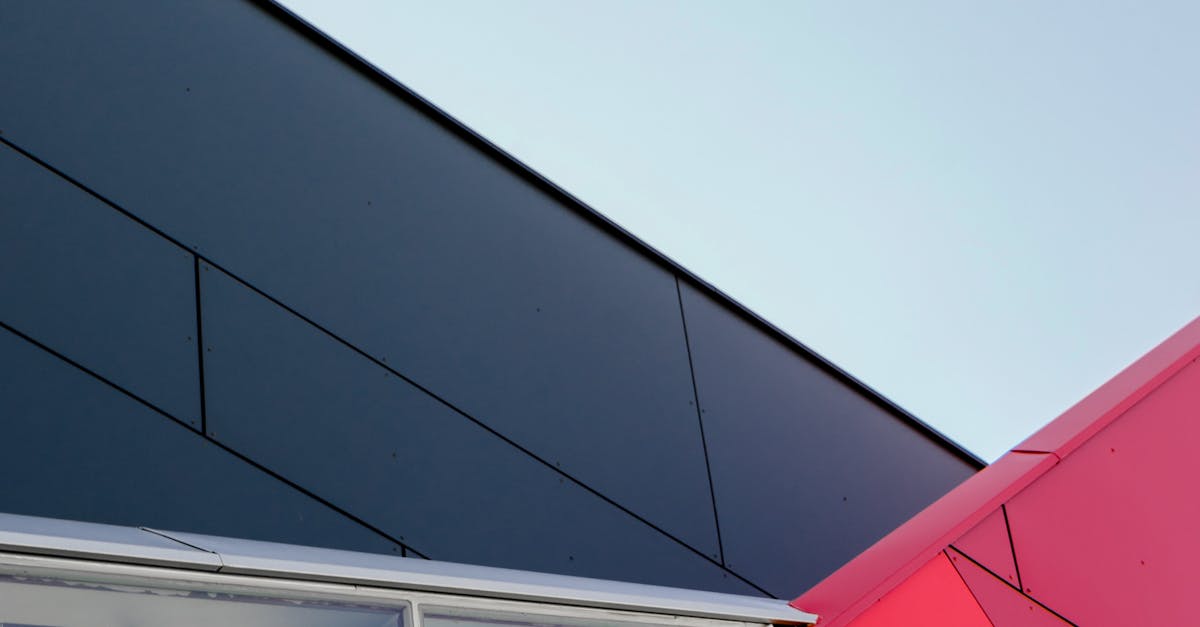
Energy Efficiency and Cost Savings with Cool Roofs
Table Of Contents
Cool Roofing Materials
Asphalt Shingles with Reflective Coating
Asphalt shingles coated with reflective materials offer a sustainable solution for enhancing energy efficiency in buildings. The reflective coating helps to reduce heat absorption by reflecting sunlight, thereby diminishing the amount of heat transferred into the building. This leads to a cooler indoor environment, decreasing the need for constant air conditioning and lowering energy consumption.
Table Of ContentsCool roofs have been shown to bring significant energy savings in various case studies conducted on commercial buildings. The application of cool roofing materials, such as asphalt shingles with reflective coating, has proven to reduce the overall energy consumption required for cooling systems, leading to substantial cost savings for building owners. The reflective properties of these materials help to lower rooftop temperatures, thereby decreasing the need for air conditioning during hot seasons.
One notable case study highlighted the energy efficiency improvements in a commercial building after the installation of a cool roof. The results indicated a noticeable reduction in energy expenses associated with cooling the building, demonstrating the practical benefits of investing in cool roofing solutions. These findings underscore the value of implementing energy-efficient practices in building design and maintenance, not only for sustainability purposes but also for long-term economic advantages.Resistance to Harsh Weather Conditions
Commercial Building Energy Savings
Commercial buildings are substantial consumers of energy, with a significant portion of this energy being used for cooling and air conditioning systems. By installing cool roofs made of materials with high solar reflectance and thermal emittance properties, commercial buildings can dramatically reduce their energy consumption. The reflective surface of cool roofs helps to bounce sunlight away, preventing the building from absorbing excessive heat and reducing the need for constant air conditioning to maintain a comfortable indoor temperature.Protection Against Climate Change Effects
Moreover, the implementation of cool roofs in commercial buildings not only leads to energy savings but also contributes to a reduction in greenhouse gas emissions. As these roofs help to lower indoor temperatures, they lessen the reliance on air conditioning systems powered by fossil fuels, subsequently decreasing carbon emissions associated with energy consumption. By investing in cool roofs, commercial building owners can make significant strides towards achieving energy efficiency targets and environmental sustainability goals.Impact on Urban Heat Island Effect
Government Incentives
Cool roof technology offers significant benefits not only in terms of energy efficiency but also in cost savings. One of the key drivers encouraging the adoption of cool roofs is the availability of government incentives. These incentives serve as a strong motivation for building owners and developers to invest in sustainable roofing solutions. Cooling Benefits in Urban Environments
Government incentives can take various forms, including rebates and tax credits. These financial incentives help offset the initial costs associated with installing cool roofs, making them a more attractive option for businesses and homeowners looking to improve the energy efficiency of their properties. By leveraging these incentives, individuals and organisations can not only contribute to reducing their energy consumption but also enjoy long-term savings on their energy bills.Noise Reduction and Insulation Properties
Rebates and Tax Credits
As part of encouraging the adoption of cool roofs and promoting energy efficiency, various government incentives, such as rebates and tax credits, are offered to both residential and commercial building owners. These financial incentives aim to offset the initial costs associated with installing cool roof materials, making it a more attractive option for property owners looking to reduce their energy consumption and utility bills.Improved Indoor Comfort and Energy Savings
Metal roofing installation offers significant protection against the adverse effects of climate change. The durable nature of metal roofs enables them to withstand extreme weather conditions, such as heavy rainfall, strong winds, and intense heat waves. This resilience helps prevent damage to the roof structure, ultimCool Roof Coating Options for Reflecting Sunlightately contributing to the overall sustainability of buildings in the face of changing climatic patterns.
Cool Roof Installation Process and Best PracticesFurthermore, metal roofs are highly reflective, which helps to reduce the amount of heat absorbed by buildings. This reflective property minimises the urban heat island effect, where urban areas experience higher temperatures than surrounding rural areas due to human activities and the presence of dark, heat-absorbing surfaces. By mitigating this phenomenon, metal roofing installations play a crucial role in promoting thermal comfort and energy efficiency in urban environments.
Cool Roofs: A Sustainable Solution for Climate Change MitigationImpact on Urban Heat Island Effect
Cool Roof Design Considerations for Residential BuildingsMetal roofing is becoming increasingly popular for its positive impact on reducing the urban heat island effect in cities. Unlike traditional roofing materials, metal roofs reflect a significant amount of solar radiation, reducing heat absorption and minimising the heat island effect. This can help to lower urban temperatures, decrease energy consumption for air conditioning, and improve overall environmental conditions in urban areas.
Understanding the Insulation Properties of Cool RoofsIn addition to reducing the urban heat island effect, metal roofing can also contribute to a more sustainable and energy-efficient urban environment. By reflecting sunlight and heat away from buildings, metal roofs help to reduce the demand for air conditioning, thereby decreasing greenhouse gas emissions and energy consumption. This not only benefits the immediate surroundings but also supports global efforts to combat climate change.
Maintenance Tips for Cool Roofing SystemsCooling Benefits in Urban Environments
Choosing the Right Materials for Cool Roof InstallationInstalling metal roofing in urban environments can significantly contribute to cooling benefits. The reflective properties of metal roofs help to reduce the absorption of heat, lowering the overall temperature in urban areas. This cooling effect can alleviate the urban heat island phenomenon, making cities more comfortable for residents, especially during hot summers. Additionally, by decreasing the amount of heat absorbed into buildings, metal roofing can help reduce the need for air conditioning, leading to lower energy consumption and utility costs.